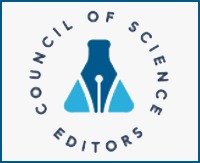Longitudinal analysis of post-transplant electrolyte disorders and their impact on graft survival
DOI:
https://doi.org/10.65327/kidneys.v14i4.560Keywords:
electrolyte disorders; graft survival; kidney transplantation; hyponatremia; hyperkalemia; longitudinal study; post-transplant outcomesAbstract
Imbalances in electrolytes are common complications after kidney transplantation. However,
the long-term influence of their focus on graft outcomes is understudied. The goal of the current study
is to analyze the incidence, the course, and the prognostic significance of electrolyte disturbances on
graft survivorship. The cohort study followed renal transplant recipients for three years, during which time
sodium, potassium, magnesium, calcium, and other clinical correlates were routinely assessed. The clinical
thresholds were then used to classify participants with unbalanced electrolytes, and survival outcomes
were assessed using Kaplan-Meier curves and Cox proportional hazards models. Results from the study
showed high prevalence of hyponatremia, hyperkalemia, and hypomagnesemia, all of which significantly
correlated with graft impairment survivorship; hypocalcemia had weaker correlations. Individuals who
had recurrent disturbances in the level of electrolytes suffered from a decline in graft function much earlier
than those who had normal content. Multivariate analysis showed that graft loss could not be avoided
even when demographic and immunologic confounders were accounted for, which reaffirms the notion
that electrolyte imbalance is a predictor of loss. Hence, the study outcomes call for the standard practice
of actively monitoring electrolytes with the goal of taking timely corrective action to improve long-term
outcomes following transplantation. The study found that an active, corrective approach to treating
electrolyte disorders is essential for achieving optimal transplant outcomes in conservatively managed
grafts.
Downloads
References
Wan SS, Wyburn K, Chadban SJ, Collins MG. Balanced
electrolyte solutions versus 0.9% saline for kidney transplantation:
an updated systematic review and meta-analysis. Transplant Direct.
;11(1):e1687. doi: 10.1097/txd.0000000000001687.
Wan Q, Hu X. Legal framework for security of organ transplant information in the digital age with biotechnology. Nat Eng Sci.
;9(2):73-93. doi: 10.28978/nesciences.1569190.
Van Boemmel-Wegmann S, Bauer C, Schuchhardt J, Hartenstein A, James G, et al. Hyperkalemia incidence in patients with nondialysis chronic kidney disease: a large retrospective cohort study from
United States clinical care. Kidney Med. 2024;6(10):100879. doi:
1016/j.xkme.2024.100879.
Fatima H, Jabeen F, Raza T, Raza MH, Zafar S,
Chaudhry AS. Copper nanoparticles induced oxidative stress and tissue integrity in gills and brain of Cyprinus carpio. Int J Aquat Res
Environ Stud. 2024;4(2):53-68. doi: 10.70102/ijares/v4i2/4.
Prabhahar A, Batta A, Hatwal J, Kumar V, Ramachandran R,
Batta A. Endothelial dysfunction in the kidney transplant population:
current evidence and management strategies. World J Transplant.
;15(1):97458. doi: 10.5500/wjt.v15.i1.97458.
Rad HN, Behnamghader A. Preparation of bioactive glass
S for bone tissue engineering applications. Int Acad J Sci Eng.
;1(2):68-74.
Van De Klundert J, Perez-Galarce F, Olivares M, Pengel L,
De Weerd A. The comparative performance of models predicting patient and graft survival after kidney transplantation: a systematic review. Transplant Rev. 2025;100934. doi: 10.1016/j.trre.2025.100934.
Javier F, José M, Luis J, María A, Carlos J. Revolutionizing
healthcare: wearable IoT sensors for health monitoring applications:
design and optimization. J Wireless Sensor Netw IoT. 2025;2(1):31-41.
Tontu F. Fluid selection in renal transplant patients: considerations for hyperkalemia management. Turk J Anaesthesiol Reanim. 2025. doi: 10.4274/tjar.2025.251963.
Hameed AZ, Balamurugan R, Rizwan A, Shahzad MA.
Analyzing and prioritizing healthcare service performance in hospitals using Serqual model. Arch Tech Sci. 2025;1(32):165-175. doi:
70102/afts.2025.1732.165.
Khan I, Wani M, Wani I, et al. Incidence of complications
and outcome in live kidney transplant recipients at 1 year — a single
center experience. Egypt J Intern Med. 2025;37:30. doi: 10.1186/
s43162-025-00414-z.
Chang W, Xu M, George A, Kingeter M, Henson CP, et al. Hyperkalemia in liver transplantation. J Clin Anesth. 2025;103:111822.
doi: 10.1016/j.jclinane.2025.111822.
Carlsen RK, Åsberg A, Svensson M, Birkeland KI, Jørgensen HS, et al. Hypomagnesemia, insulin secretion and action in patients without diabetes, 1 year after kidney transplantation. Front Med.
;12. doi: 10.3389/fmed.2025.1492871.
Méndez-Laureano BJ, Gallardo-Pérez MM, Minutti-Zanella C,
Ruiz-Argüelles GJ. Serum electrolyte and metabolic changes during conditioning of autologous hematopoietic stem cell transplantation in patients with
autoimmune diseases: a prospective study in a single institution. Hematol
Oncol Stem Cell Ther. 2023;17(1):29-36. doi: 10.56875/2589-0646.1106.
Soeiro L, De Moura Lima AC, Silva APV, De Araújo MEC,
Lopes DSG, et al. Analysis of graft survival in pediatric patients undergoing kidney transplantation. Braz J Transplant. 2024;27(1). doi:
53855/bjt.v27i1.571_eng.
Alotaibi M, Trollinger B, Kant S. Management of kidney
transplant recipients for primary care practitioners. BMC Nephrol.
;25:102. doi: 10.1186/s12882-024-03504-2.
Yu S, Chen H, Wu G, Chen T, He Y, et al. Ischemia-free kidney transplantation from deceased donor kidneys: the first retrospective cohort study. Organ Med. 2024;1(1):30-37. doi: 10.1002/orm2.7.
Gupta A, Mahnken JD, Bernal J, Sharma P, Lepping RJ,
et al. Changes in cognitive function after kidney transplantation: a
longitudinal cohort study. Am J Kidney Dis. 2024;84(1):28-37.e1. doi:
1053/j.ajkd.2023.12.022.
Alfieri C, Campioli E, Fiorina P, Orsi E, Grancini V,
et al. Post-transplant diabetes mellitus in kidney-transplanted patients: related factors and impact on long-term outcome. Nutrients.
;16(10):1520. doi: 10.3390/nu16101520.
Kajdas AA, Kleibert M, Normann AK, et al. Immunosuppressive therapy and nutritional diseases of patients after kidney
transplantation: a systematic review. BMC Nephrol. 2025;26:33. doi:
1186/s12882-025-03964-0.
Riaza Ortiz C, Fernández Fernández C, Pujol Pujol M, Muñiz
Rincón M, Aiffil Meneses AS, et al. Prevalence, risk factors and potential protective strategies for hypomagnesemia in kidney transplant recipients. Int J Mol Sci. 2025;26(13):6528. doi: 10.3390/ijms26136528.
Teh JW, Mac Gearailt C, Lappin DWP. Post-transplant bone
disease in kidney transplant recipients: diagnosis and management.
Int J Mol Sci. 2024;25(3):1859. doi: 10.3390/ijms25031859.
O’Reilly C, Tunnicliffe D, Blackley A, Collins M, O’Neill E,
et al. CARI guideline: evidence-based recommendations for balanced
electrolyte solutions to improve kidney transplant outcomes. Kidney
Int Rep. 2025;10(8):2566-2574. doi: 10.1016/j.ekir.2025.05.051.
Chang Y, Qin Y, Zou Y, Zeng H, Li C, et al. Plasma-lyte
solution versus saline in kidney transplantation: a systematic review and meta-analysis of randomized controlled trials. PLoS One.
;20(4):e0320082. doi: 10.1371/journal.pone.0320082.
Aleysae NA, Kimawi A, Bamahmoud A, Alharbi N, Salem M,
et al. Do the perioperative intravenous fluids affect kidney graft function and electrolytes in pediatric kidney transplantation? Res Square.
doi: 10.21203/rs.3.rs-3983305/v1.
Downloads
Published
How to Cite
Issue
Section
License
Copyright (c) 2025 Lukeshwari Sahu, Pranjali Verma

This work is licensed under a Creative Commons Attribution 4.0 International License.

 ISSN
ISSN  ISSN
ISSN 


























